Script and Textual Contents
Description and Contents
The text on the reverse of the initials is in Latin, written in the rounded Italian type of Gothic bookhand (textualis).
Marlay cutting It. 13A: the initial S opened the Introit to the Mass for the feast of the Purification of the Virgin (2 February), beginning Suscepimus Deus misericordiam, originally on fol. 42 in Corale 2 (a Gradual). The Macro-XRF scan of the reverse reveals the fragmentary rubric, In purifi[catione] b[ea]tissime virgi[nis] Marie. cum can[delae] ceperint dari. In[tr]at cantor
MS 5-1979: the initial D opened the Introit to the Mass for the feast of St Clement (23 November), beginning Dicit dominus sermones mei, originally on fol. 159 in Corale 2 (a Gradual)
Marlay cutting It. 13.i: the initial L opened the responsory for the first lesson of Matins for the feast of St Laurence (10 August), beginning Levita Laurentius bonum operatus, originally on fol. 62 in Corale 19 (an Antiphoner). The fragmentary text on the reverse is from the versicle for the third lesson of the first nocturn at Matins for the feast of St Laurence, [Mea nox obscurum non habet, sed omnia in luce cl]arescunt. B[eate Laurenti martyr Christi intercede pro nobis.] In se[cundo nocturne]
Marlay cutting It. 13.ii: the initial I may have opened the Introit to the Mass for Easter Monday, beginning Introduxit vos Dominus in terram fluentem lac et mel, originally on fol. 19 in Corale 3 (a Gradual) or in another, lost Gradual. The isolated letters and notes on the reverse do not allow for a firm identification
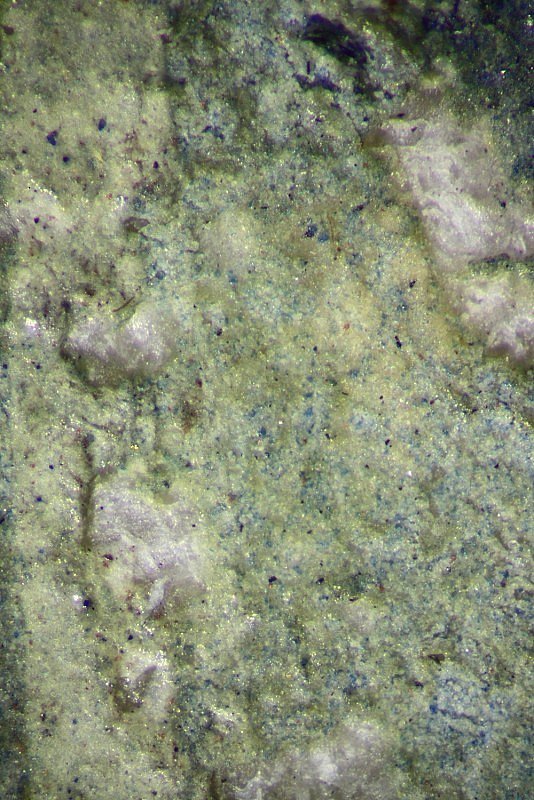
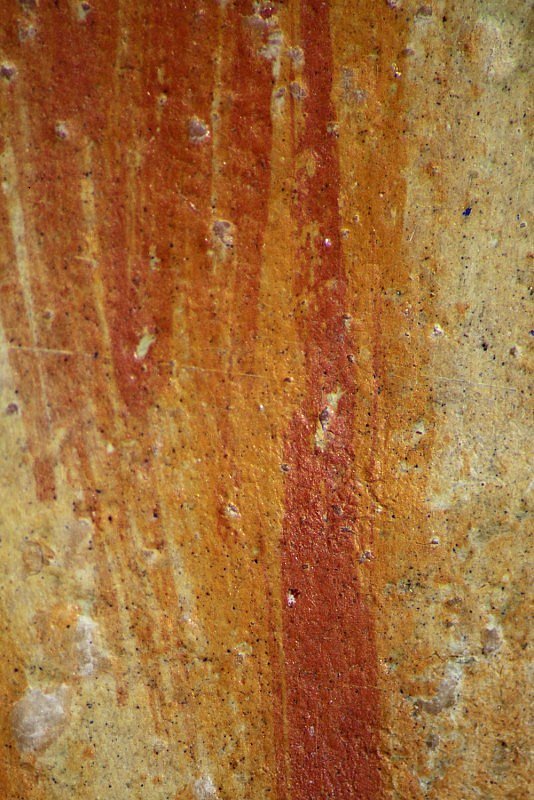
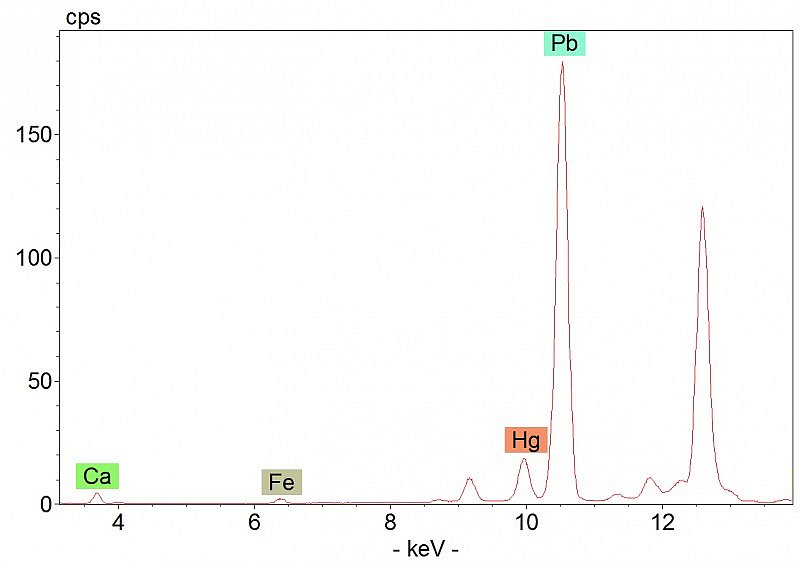
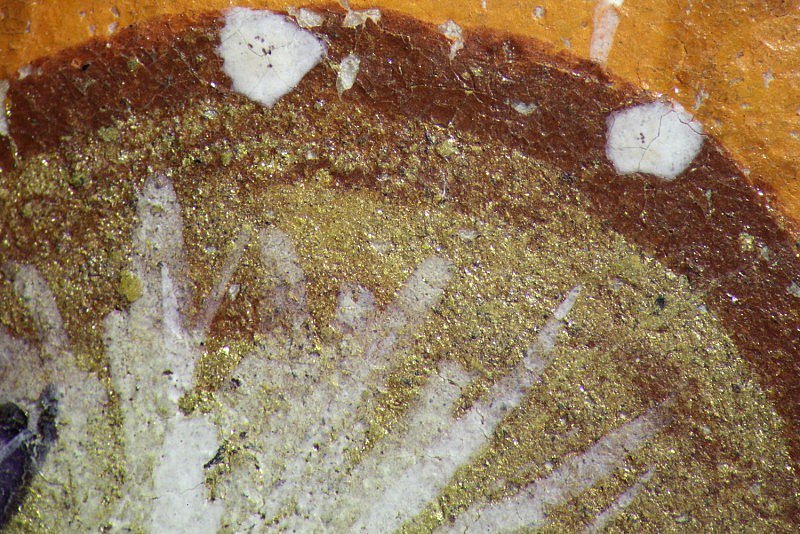
Detail of
the mosaic gold leaf, outlined with a dark red earth pigment, under
magnification (16x). Its shiny aspect and the characteristic peak at 308 cm-1
in the Raman spectrum (below) confirm the presence of mosaic gold.
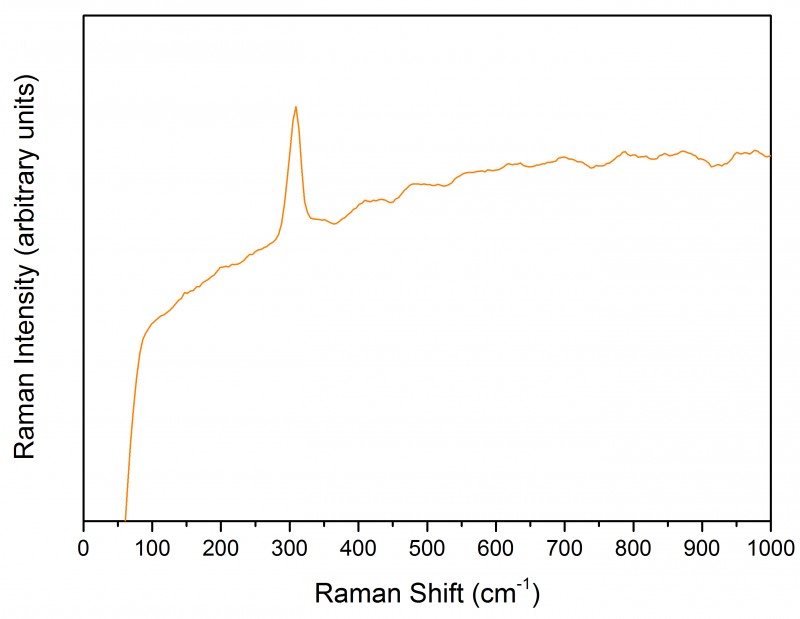
St Laurence
Historiated initial L from an Antiphoner, 1390s
The initial L belonged to the office of Matins for the feast of St Laurence (10 August) in Corale 19, an Antiphoner made in the 1390s. St Laurence is shown with a book, a martyr’s palm branch and his distinctive attribute, the gridiron on which he was tortured. The image has been attributed to various artists: Don Silvestro dei Gherarducci; his collaborator known as the Maestro delle Canzoni; or the Florentine painter and illuminator Mariotto di Nardo.
It is also possible that the figure of St Laurence and the decorated initial were painted by two different artists; despite general similarities, some differences exist between the pigments used in these two areas. Green hues, for example, were all obtained using a mixture of azurite with a yellow pigment. The palm leaf held by the Saint, however, seems to contain ultramarine as well (hotspot 1). The XRF data also suggest the presence of gypsum in most of the border areas analysed, but not in the figure of the Saint.
Related content: Initials from Choir Books
- Artists: The Artists associated with the initial of St Laurence
- Texts and Images: St Laurence
- Description and Contents: Physical Description
- Description and Contents: Script and Textual Contents
- Artists' Materials: Differences in palette
- Artists' Materials: Selective use of egg yolk binder
- Artists' Techniques: Gold tooling
- Artists' Techniques: Painting the flesh
